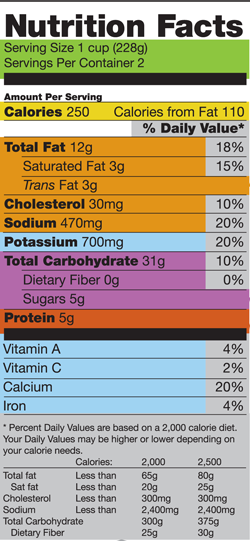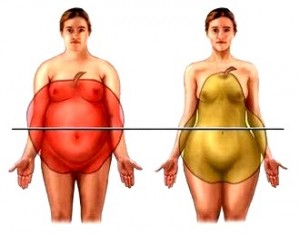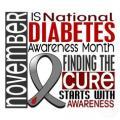10 Simple Steps to Eat Healthier and Save Mother Earth – Can I Count You In?
 April 22, 2013 is Earth Day - once again.
April 22, 2013 is Earth Day - once again.
It’s easy to feel overwhelmed and powerless when we hear about the large and significant global problems caused by our years of mistreating Mother Earth. Feeling overwhelmed can make it hard to imagine that each of us, one by one, can, make a difference in the health of our global climate. But I believe each of us has the power to impact the health of our climate...by how and what we eat. Yes, it’s true!
Recently I heard The Diet-Climate Connection by David Freudberg, host of the public radio series Humankind. In a blog on Huff Post he wrote, “The food recommendations made by many climate scientists align neatly with what health experts have told us for many decades: on average Americans consume way too few fruits, vegetables, legumes and grains and far too many meat and dairy products (see: epidemics of obesity, heart disease and type 2 diabetes). What hit me here was the two-fer: what's good for the planet is good for your body. It's not just your mode of transportation, or how well you insulate your home. Now your menu matters, too.”
New Diabetes Numbers – Sound the Alert LOUDER
 While we were experiencing a much ado about nothing “snow storm” in Washington, DC on March 6, 2013, hundreds of diabetes advocates were storming Capitol Hill for a cause we should be doing much about.
While we were experiencing a much ado about nothing “snow storm” in Washington, DC on March 6, 2013, hundreds of diabetes advocates were storming Capitol Hill for a cause we should be doing much about.
To kick off their advocacy day the American Diabetes Association’s (ADA) released findings from a report they commissioned, Economic Costs of Diabetes in the U.S. in 2012, at a press conference. Joining ADA leaders at the press event were Ann Albright, PhD, RD, director of CDC’s Division of Diabetes Translation, Judith Fradkin, MD, director of the National Institutes of Health’s division which encompasses diabetes (NIDDK) and several key members of the Congressional Diabetes Caucus, Senator Susan Collins (R-ME) and Senator Jean Shaheen (D-NH) (who has a granddaughter with type 1 diabetes I learned at AADE's advocacy day in 2012).
The stats presented by ADA are downright scary! It is, without a doubt, time to sound the alert about our prediabetes and type 2 diabetes epidemics louder and louder.
Check out a few key stats.* Read through these slowly and repeatedly, it takes a few readings to absorb their impact!
Book Review: The Teen Eating Manifesto: The Ten Essential Steps to Losing Weight, Looking Great and Getting Healthy
This is one in a series of book review blogs. You may find these books beneficial if you: manage prediabetes or diabetes, follow a diabetes meal plan and/or try to eat healthy to live well or, in the case of this book, are or have an overweight teen. These book reviews also appear on amazon.com and the books can be found in my amazon a-store. Please check out these books and consider a purchase.
 With childhood and adolescent obesity regularly in the headlines and attracting much angst in the public health community, it’s the right time to see a book geared towards healthy eating and healthy weight loss for teens. Dietitian and Certified Diabetes Educator, Lisa Stollman, MA, RD, CDE, CDN, has written The Teen Eating Manifesto: The Ten Essential Steps to Losing Weight, Looking Great and Getting Healthy, to help guide the group of individuals tagged by Centers for Disease Control and Prevention as the only generation to date expected to have a shorter lifespan than that of their parents.
With childhood and adolescent obesity regularly in the headlines and attracting much angst in the public health community, it’s the right time to see a book geared towards healthy eating and healthy weight loss for teens. Dietitian and Certified Diabetes Educator, Lisa Stollman, MA, RD, CDE, CDN, has written The Teen Eating Manifesto: The Ten Essential Steps to Losing Weight, Looking Great and Getting Healthy, to help guide the group of individuals tagged by Centers for Disease Control and Prevention as the only generation to date expected to have a shorter lifespan than that of their parents.
Next Generation Nutrition Facts Label: What to Add or Ax?
 A recent Washington Post op-ed, FDA Should Revamp Nutrition Labels, by Michael Jacobson, PhD, and executive director of the Center for Science in the Public Interest, got me thinking about what I would add or ax from the next generation Nutrition Facts label. Yes, rumor has it we may eventually see a next generation Nutrition Facts label. Jacobson’s op-ed indicated sometime in 2013 as did a well written HuffPost Food blog, but I’m not holding my breath!
A recent Washington Post op-ed, FDA Should Revamp Nutrition Labels, by Michael Jacobson, PhD, and executive director of the Center for Science in the Public Interest, got me thinking about what I would add or ax from the next generation Nutrition Facts label. Yes, rumor has it we may eventually see a next generation Nutrition Facts label. Jacobson’s op-ed indicated sometime in 2013 as did a well written HuffPost Food blog, but I’m not holding my breath!
It does looks like we will soon, (ah, a relative term when speaking about government regulations), see more Nutrition Facts for standard menu items in restaurants and retail food establishments, thanks due to the Affordable Care Act (aka Obamacare). Any additional Nutrition Facts are welcomed!
Our current Nutrition Facts label came into being due to the 1990 Nutrition Labeling and Education Act and began appearing on packaged foods around 1994.
Dialoging about Diabetes: PWDs Offer Ways to Improve Communication and Care #6 Ginger Vieira
 As a diabetes educator/healthcare provider (DHCP) I’m observing that the rapidly growing world of the Diabetes Online Community, the DOC for short, is helping people with diabetes (PWD) and their loved ones find support and feel supported. People are connecting, building relationships and feeling more positive about the challenges of managing their diabetes. I’m delighted to see this trend!
As a diabetes educator/healthcare provider (DHCP) I’m observing that the rapidly growing world of the Diabetes Online Community, the DOC for short, is helping people with diabetes (PWD) and their loved ones find support and feel supported. People are connecting, building relationships and feeling more positive about the challenges of managing their diabetes. I’m delighted to see this trend!
As a DHCP I’ve long realized that I can’t walk a mile in a PWD shoes. I can’t know what it is like day in, day out to deal with this challenging and relentless disease. But, what I do know is that we can learn from each other to change the dialog between providers and PWD to be more positive, more supportive.
Goal one with Dialoging about Diabetes interviews with diabetes activists is to help make living with diabetes…just a bit easier. Goal two is to enhance the two-way street – to help more PWD get connected and encourage more DHCPs to open the doors of social networking to PWD.
Rather than New Year’s Resolutions Make Lasting Healthy Lifestyle Changes
 With all the chatter about New Year’s Resolutions which for the most part fail to result in REAL CHANGE for most people, why not try a different approach in 2013? Consider these 5 key principles to a healthier lifestyle I recently offered at an American Association of University Women meeting after a showing of Food, Inc.
With all the chatter about New Year’s Resolutions which for the most part fail to result in REAL CHANGE for most people, why not try a different approach in 2013? Consider these 5 key principles to a healthier lifestyle I recently offered at an American Association of University Women meeting after a showing of Food, Inc.
About Food Inc. I absolutely agree that our food supply and eating habits have gone thru an unfortunate evolution in the last 30 plus years. I also agree we have to slowly and steadily do the hard work to reset our food environment to 'make the healthier choice the easier choice.' Today, it certainly isn’t! While I’m totally supportive of people eating organically grown foods, locally grown foods, growing their own foods and am supportive of many sustainable agriculture initiatives around the globe, I’m a pragmatist and realist at heart. I believe that for the majority of Americans we’ve got to keep in our mind’s eye the reality of our current eating habits. With these realities in mind we need to set realistic goals for ourselves, our population.
Book Review: Behavioral Approaches to Treating Obesity: Helping Your Patients Make Changes That Last
This is one in a series of book reviews. You may find these books beneficial if you: manage prediabetes or diabetes, follow a diabetes meal plan and/or try to eat healthy to live well. These book reviews also appear on amazon.com and the books can be found in my amazon a-store. Please check them out and consider a purchase.
Note: This book is geared to healthcare providers who help people make behavior changes. I’ve recently reviewed a similar book for healthcare providers Inspiring and Supporting Behavior Change: A Food and Nutrition Professional’s Counseling Guide.
 No longer is it unusual to hear the term ‘obesity’ in our culture. While studies and books abound on the topic, Behavioral Approaches to Treating Obesity, Helping Your Patients Make Changes That Last, by experts Brigitta Adolfsson, PhD and Marilynn S. Arnold, MS, RD, have created an all-in-one resource and reference guide for healthcare providers (HCPs).
No longer is it unusual to hear the term ‘obesity’ in our culture. While studies and books abound on the topic, Behavioral Approaches to Treating Obesity, Helping Your Patients Make Changes That Last, by experts Brigitta Adolfsson, PhD and Marilynn S. Arnold, MS, RD, have created an all-in-one resource and reference guide for healthcare providers (HCPs).
Behavioral Approaches to Treating Obesity begins with an in depth overview of the dismal statistics about obesity in America. The authors proceed to cover the multi-factorial nature of weight gain. They also discuss the possible ‘solutions’ for obesity which include bariatric surgery, obesity medications and/or healthy lifestyle changes.
Adolfsson and Arnold invite HCPs to view obesity from a different perspective…being open to every and all treatment modalities. In utilizing behavior change techniques for healthy lifestyle changes people make the decisions while the HCP interacts in a manner that supports the person’s well-being.
Book Review: Inspiring and Supporting Behavior Change: A Food and Nutrition Professional’s Counseling Guide
This is one in a series of book reviews. You may find these books beneficial if you: manage prediabetes or diabetes, follow a diabetes meal plan and/or try to eat healthy to live well. These book reviews also appear on amazon.com and the books can be found in my amazon a-store. Please check them out and consider a purchase.
Note: This book is geared to healthcare providers who help people make behavior changes. I’ve recently reviewed a similar book for healthcare providers Behavioral Approaches to Treating Obesity: Helping Your Patients Make Changes That Last.
 Changing behaviors is a difficult process, period! When it comes to changing behaviors to impact health outcomes, frustrations can multiply for the person managing the condition and the healthcare providers (HCPs) encouraging the person to make changes.
Changing behaviors is a difficult process, period! When it comes to changing behaviors to impact health outcomes, frustrations can multiply for the person managing the condition and the healthcare providers (HCPs) encouraging the person to make changes.
Inspiring and Supporting Behavior Change: A Food and Nutrition Professional’s Counseling Guide, written by Ann Constance and Cecilia Sauter, both dietitians and Certified Diabetes Educators with years of expertise counseling people with diabetes, is a handbook designed to help HCPs learn to more successfully and effectively inspire people to make critically important behavior changes.
Insulin Resistance, Weight Gain and Type 2 Diabetes: Connect the Dots

Have you heard the terms insulin resistance, insulin sensitivity and metabolic syndrome in the same breath as prediabetes and type 2 diabetes? Do you wonder how these terms are intertwined with prediabetes and type 2 diabetes?
Learn the terms and gather action steps put them in reverse or at least slow their progression over time.
What Is Insulin Resistance?
Insulin resistance most often occurs in people who are overweight. People who carry their extra weight around their middle – the abdomen or waist line - are at increased risk. The medical term for that apple shape is central adiposity.
Out Raising Awareness During American Diabetes Month
 The diabetes stats are downright staggering! Nearly 19 million people are diagnosed with diabetes in the U.S. and another 6 million are estimated to have diabetes but don’t yet know it. Add to this number, another 79 million people with prediabetes yet barely 10 percent of these throngs of people know they have it.
The diabetes stats are downright staggering! Nearly 19 million people are diagnosed with diabetes in the U.S. and another 6 million are estimated to have diabetes but don’t yet know it. Add to this number, another 79 million people with prediabetes yet barely 10 percent of these throngs of people know they have it.
Unfortunately people continue to think of type 2 diabetes as a ho-hum disease and tend not treat it early and aggressively. Yet we know early and aggressive care of type 2 is exactly what keeps people healthier longer. And we know early awareness and action with prediabetes can prevent/delay the progression to type 2 diabetes.
So, to honor American Diabetes Month, I’ve grabbed every opportunity which has come my way to raise awareness, educate and promote action. Check out links to these guest blogs, videos, and interviews:

